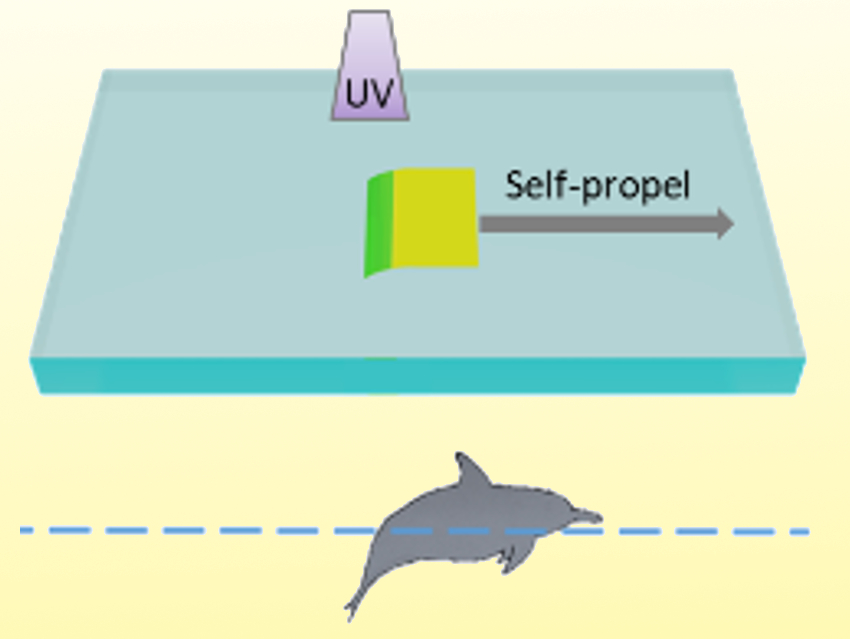Soft robots can mimic the elegant swimming motions of dolphins on a much smaller scale. Such biomimetic swimmers are based on light-activated polymers that provide them with remote energy input and contactless control.
Haifeng Yu and colleagues, Peking University, Beijing, China, have developed a composite bilayer film which shows reversible and repeatable deformation under periodic irradiation with UV light. The material is made from a commercially available polyimide (Kapton) and a photoresponsive, azobenzene‐containing liquid‐crystalline polymer network. The bilayer‐structured film shows fast photoinduced bending towards the Kapton side upon exposure to UV light and recovers immediately after the removal of light.
When placed on the surface of a liquid, this deformation can be transformed into power to drive the film’s movement through the liquid (pictured below). The velocity and the direction of movement can be regulated by changing the irradiation intensity and sites. The polymer swimmer shows fast, continuous, and controllable motion. This device is a step toward remote-controlled, miniaturized, and accurate transportation for biocompatible applications.

- A Light-Activated Polymer Composite Enables On-Demand Photocontrolled Motion: Transportation at the Liquid/Air Interface,
Shudeng Ma, Xiao Li, Shuai Huang, Jing Hu, Haifeng Yu,
Angew. Chem. Int. Ed. 2019.
https://doi.org/10.1002/anie.201811808



